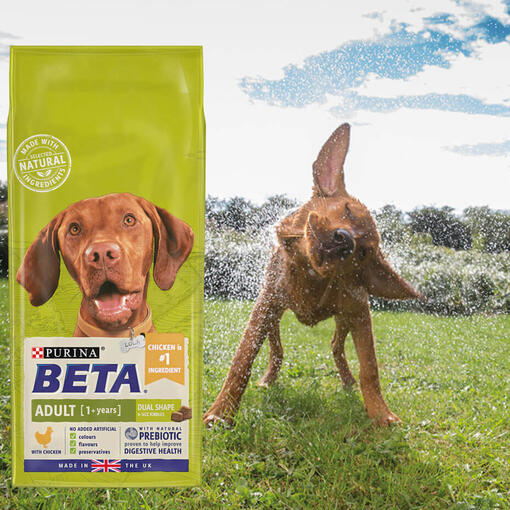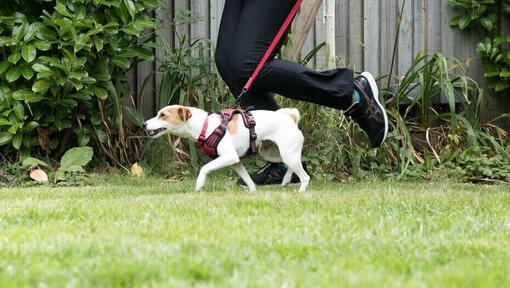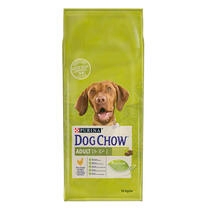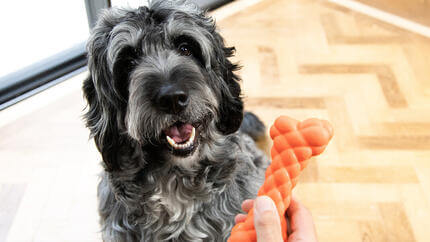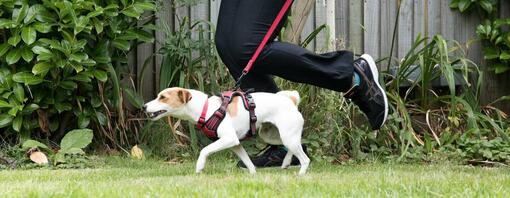

Making a running partner out of your pet can be great. If you learn how to train your dog correctly, you’ll be improving your health, happiness, and your special bond… for both of you!
Build up slowly to your ideal run. Just like humans, dogs need to acclimatise to levels of exercise. You could also research your dog’s breed to discover exactly what kind of running they might enjoy: you never know, they might just inspire you to achieve a marathon with time!
Why run with your dog?
There’s a whole host of research that tells us how great running can be for your health. It prevents helps obesity, helps you to get fit, and can increase your stamina. It’s even been shown to lift your mood. And it doesn’t require an expensive gym membership either.
What’s good for you is also great for your dog: it’ll also help them to lose weight if their body condition isn’t ideal, build muscle, and keep healthy. Keeping your dog fit and healthy is the best way to avoid expensive vet bills in the future. It’s also fantastic for your dog’s mood: most dogs are built to run (albeit some breeds more than others). They all enjoy the sights, sounds and smells of the outdoors, and time spent pounding the pavement with you will always be time well spent in your pet’s mind.
If you’ve noticed destructive behaviours creeping in, jogging with your dog might be a solution. Active breeds that are kept indoors for long periods of time can become bored, which may result in a bad behaviour. Keeping their mind and body active will help to get rid of that pent-up energy, and it’ll also build a great bond between the pair of you.
How to train your dog to run with you
There’s no one schedule that you should use for running with dogs: tailor the exercise to both you and your pet’s initial capabilities, and build up slowly. It’s also good to talk to your vet before beginning any exercise regime.
Before you begin running with your dog you should make sure that they’re capable of the exercise, they don’t have any pre-existing health problems which running might exacerbate, and they only run for as long as their stamina naturally allows.
- Start with a short, 10-minute run somewhere familiar for your dog.
- Increase your distance gradually over a number of weeks.
- Your dog should be panting, but not winded, during your runs.
- Don’t get so out of breath that you can’t give them commands!
How to run with a lead
Keeping your dog on a lead during your runs is the best way to start your training as it will keep them safe and close. In the beginning it might be that your dog either pulls ahead or lags behind, which will be annoying for your pace. Given time and practice, though, both you and your pet will acclimatise to one another’s running patterns.
Before running with a dog make sure they can walk on a lead to heel. It’s best to avoid retractable leads as too much distance can lead to complications. Starting with a lead of about three to six feet will give you enough space, but not so much that your dog feels able to wander.
How age and breed affects the run
Certain dogs are naturally built for different conditions, and their ability to run doesn’t necessarily correlate to their size. You might be surprised to find that the relatively small Parson Russell terrier is a steady runner who can go for miles, whereas the leggy greyhound will prefer a short, sharp sprint to a long run any day. If you’re looking for a new dog and you would like them to be your running partner, be sure you do your research and choose a breed that enjoys the same kind of exercise as you.
Be careful about running with young dogs: puppies might not be ready to go running until they’re fully grown. Older dogs, similarly, require some consideration: whilst they will still enjoy the exercise, they may tire more quickly than a younger dog.
Top tips for running with a dog
- Stay alert: your dog can’t tell you when they’re tired or unwell. Take notice of any unspoken signs while your running with them.
- Drink lots: it’s important for both you and your dog to stay hydrated while exercising, so always carry water on long runs. Dogs will suffer more quickly from dehydration than exhaustion when exercising.
- Take care: clean your pet’s paws after a run, and check for any cuts or scrapes. Unattended injuries can lead to infections.
- Choose carefully: pick routes and environments that you will both enjoy. Running over grass will be better for both you and your dog’s joints, but beware of unseen hazards like rabbit holes.
- Keep clean: even if you are going at a pace, you still need to pick up after your pet!
- Have fun! Running with your dog can be some of the best, most enjoyable, and most meaningful exercise you do.
Next, check out our top tips for dog exercise.
Recommended by Dog Chow
More articles by Dog Chow


